The habitat that first comes to mind when we refer to cranes is wetlands. We immediately think of an expansive amount of water dotted with lilies and lotus, bordered by swaying reeds in which a heron or two skulks, accompanied by the symphony of frogs.
For the Sarus Crane, the imagery is more diverse. In South Asia, these cranes live and nest amid flooded rice paddies, never far from the humdrum of a north Indian village, its farmers and their cattle. They also use the community-owned wetlands on the riverine floodplains, where they are joined by a multitude of waterbird species, alongside cattle, pigs and farmers.
The habitat of breeding cranes in Australia is rather different. The Sarus shares their breeding areas with Brolgas in the region of northern Australia bordering the Gulf of Carpentaria. Here, they breed in woodlands!
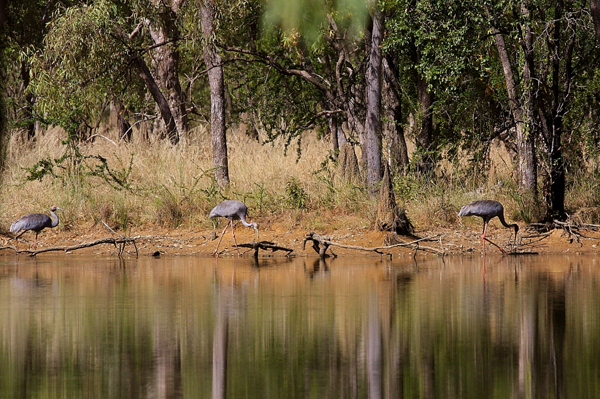
Along with local ecologists, crane experts, collaborators and colleagues, I visited Australia in April and May this year to understand how the cranes are faring. It was a very different world indeed than the one I am used to in South Asia.
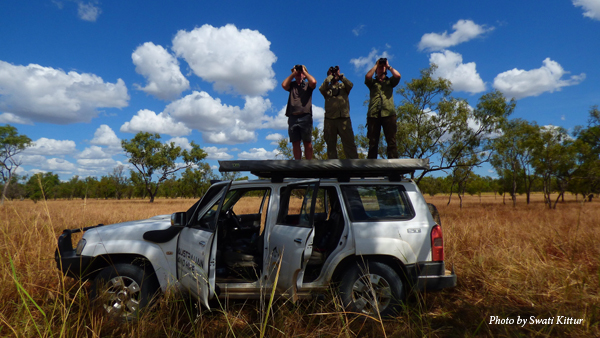
Much of the land is held under long-term leases, with owners using the mixed grasslands, wetlands and woodlands, primarily of Eucalyptus, to graze millions of cattle. They also need places where the cattle can drink. These areas are provided by either naturally flooded depressions, or artificial ones, which the cranes also have adopted.
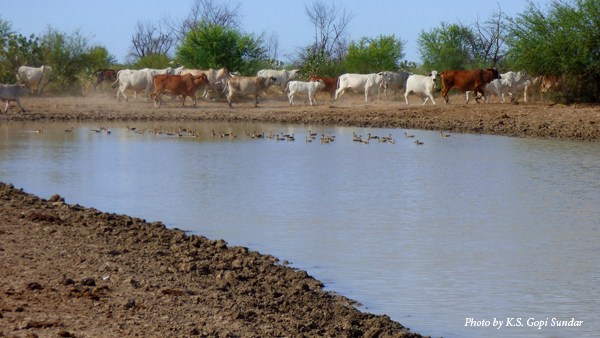
We counted over a thousand Sarus and Brolga during our survey, where we covered nearly 3,000 kilometers. We saw that many of the pairs had managed to raise chicks, and we witnessed wonderful, noisy flocks of both crane species jousting on the cattle ranches.
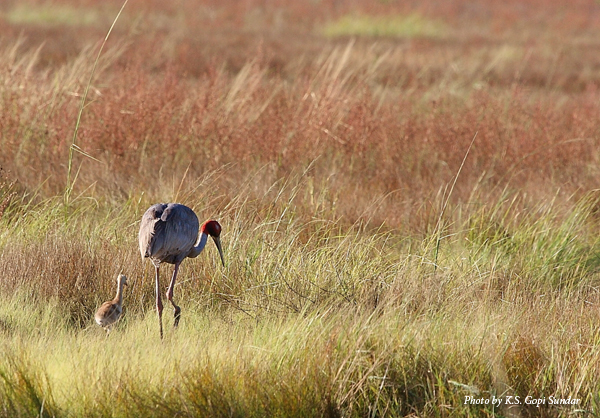
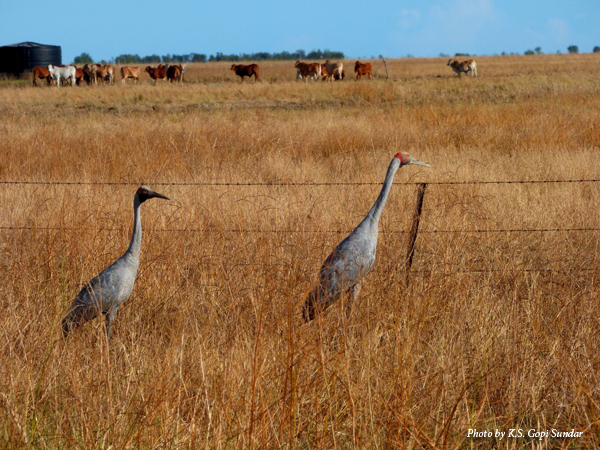
The forests, we also discovered, were a fantastic repository to a multitude of unique wildlife. We had to stop our vehicle many times to allow bustards displaying to each other. Massive flocks of pigeons feeding on the roads also halted us. We counted thousands of falcons and kestrels, several of which were following cranes walking through the grasses to pick up the insects that the cranes disturbed.
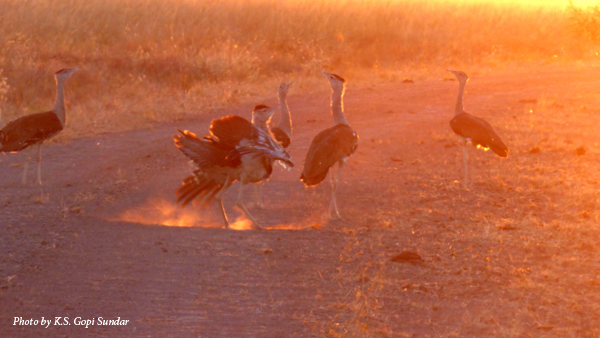
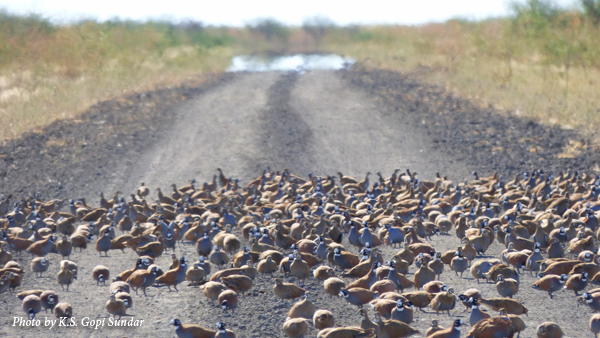
Animals were largely unused to vehicles, and we saw many road kills. These, in turn, attracted the wedge-tailed eagles and other raptors turning our driving into a refreshing opportunity to watch fantastic wildlife.
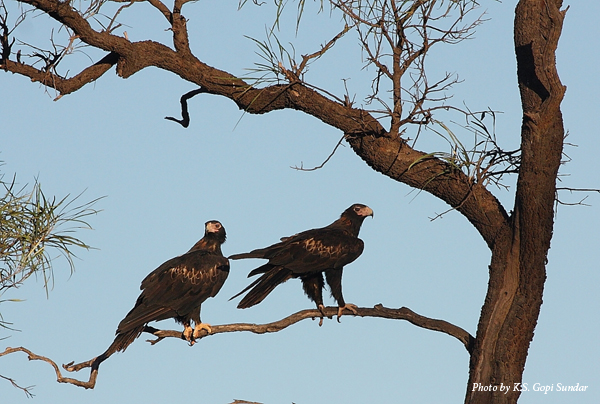
We swerved away from Wallabies and Kangaroos on the roads, slowed down to allow flocks of brightly-colored Galahs to fly away, screeched to a halt as frill-necked lizards displayed valiantly at our vehicle, and watched in awe as gigantic monitor lizards moved across the grasslands looking for something to eat.
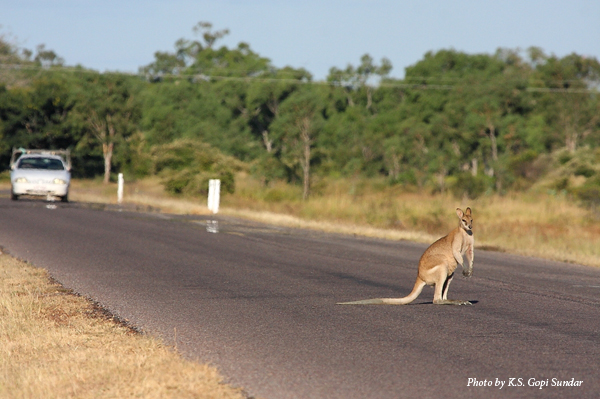
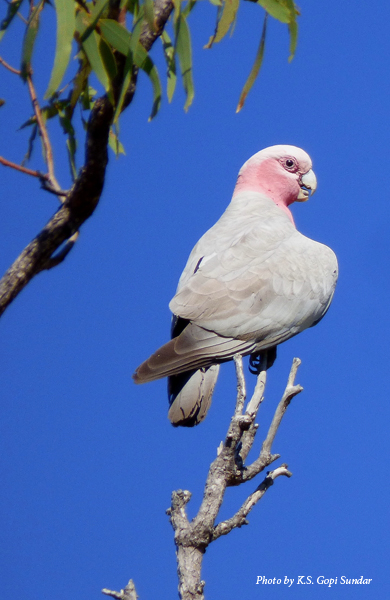
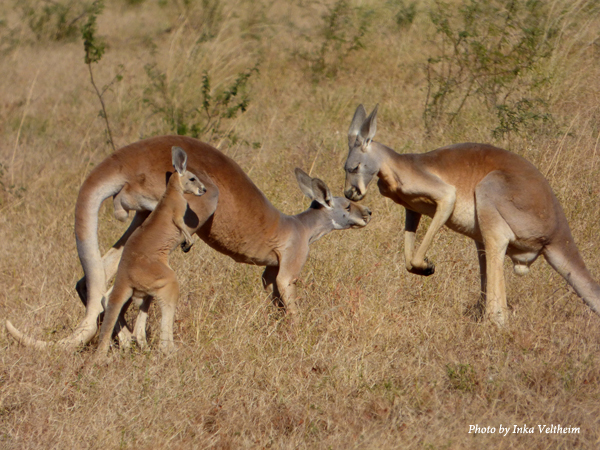
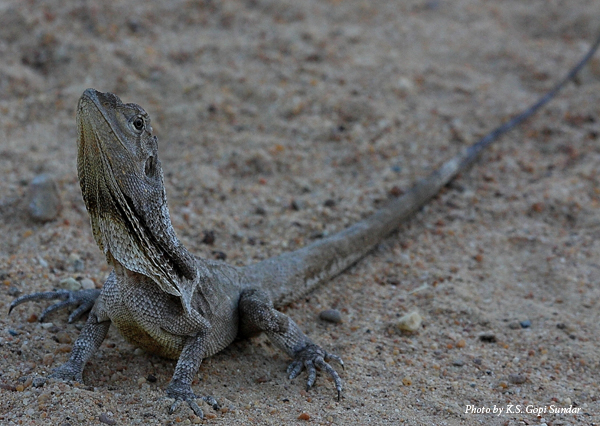
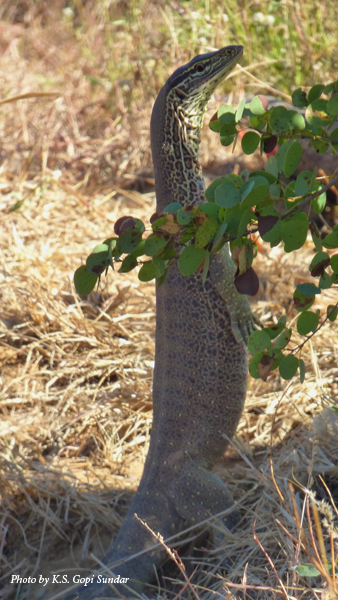
The Sarus’ breeding areas in Australia, we realized very quickly, were much more than just crane areas. They were in part ancient in having lizard and bustard habitats, and in part recent in being modified for cattle and ranchers, proving to be useful for cranes.
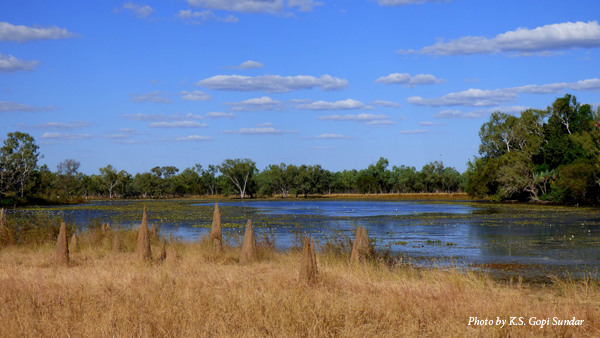
The cranes of the forest have opened up a world that is exciting, somewhat untouched despite being heavily modified, and hosting a diversity of flora and fauna that is uniquely Australian. With this post, we are thrilled to announce our new foray into Australia where we will work with several Australian colleagues and institutions over the coming years. Together, we will seek to learn about the wonders of this glorious landscape, and collaborate with the hard-working people of the Gulf region to conserve the cranes.
This work was initiated with the support of donors in Australia, matching grants provided by the University of Melbourne, and support from the Nature Conservation Foundation. Our partners in this initiative are Australian ecologist John Grant and crane expert Elinor Scambler, colleagues at the University of Melbourne, Inka Veltheim and Michael McCarthy, and Swati Kittur from the Nature Conservation Foundation. To all, I am beholden for their interest, help, and partnership, and look forward to a long-lasting collaboration.
 Story submitted by Dr. Gopi Sundar, SarusScape Program Director for the International Crane Foundation. Click here to learn more about our work in South/Southeast Asia.
Story submitted by Dr. Gopi Sundar, SarusScape Program Director for the International Crane Foundation. Click here to learn more about our work in South/Southeast Asia.
